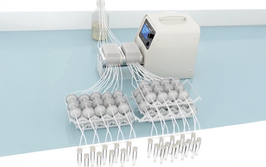Analysis of Milk for Major and Trace Elements by ICP-MS

contributed by Perkin Elmer |
Introduction
Milk is a widely consumed food product for both adults and children, while formula milk may constitute a major nutrient source for infants. Furthermore, milk and milk powder are used widely in the food industry for the production of other foods. Because of its nutritional importance and widespread consumption, regulations in many countries necessitate that the quality of the milk is routinely monitored. Both dairies and food manufacturers need to carry out the analysis of major, trace, and contaminant elements in milk and milk powders to fulfill requirements for labelling purposes, monitor nutritional quality, and safeguard against contamination by toxic elements. In Europe, regulations such as Commission Regulation (EC) No 1881/2006 set out maximum levels for some contaminants in foods. Similarly, in India, Food Safety and Standards Regulations (FSSRI) address maximum permitted levels by element over a variety of food groups. In the USA, Proposition 65 regulates contaminants based on maximum daily exposure limits. With elemental concentrations ranging from ng/L to percent levels, samples can present a challenge for ICP-MS instruments in testing laboratories where sample throughput and efficiency is sought. To fulfill this need for the analysis of milk and milk products, reliable testing methods are required.
Log in or register to read this article in full and gain access to The Analytical Scientist’s entire content archive. It’s FREE!

















